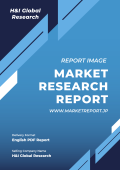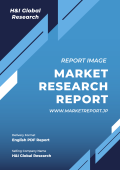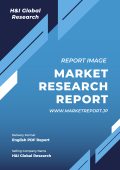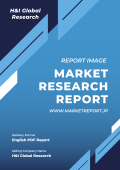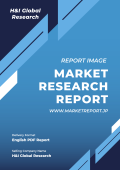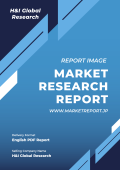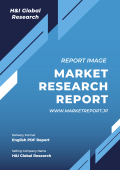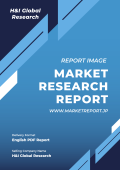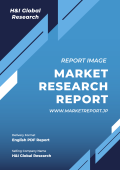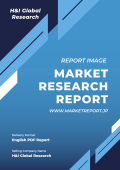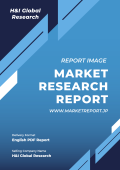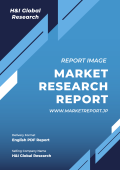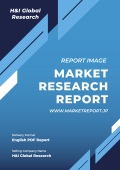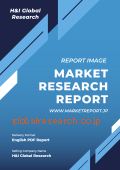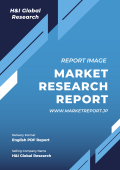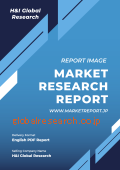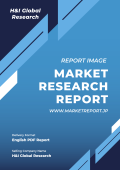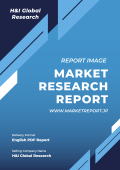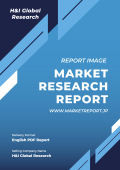| ■ 英語タイトル:Automotive Powertrain Sensors Market Report by Sensor Type (Temperature Sensors, Position Sensors, Exhaust Sensors, Knock Sensors, Speed Sensors, Torque Sensors, Pressure Sensors, and Others), Powertrain Subsystem (Engine Management Sensors, Transmission Management Sensors, Power Steering Sensors), Vehicle Type (Internal Combustion Engines, Electric Vehicles), Sales channel (Original Equipment Manufacturer (OEMs), Aftermarket), and Region 2023-2028
|
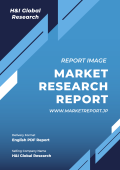 | ■ 発行会社/調査会社:IMARC
■ 商品コード:IMARC23JLY023
■ 発行日:2023年7月
■ 調査対象地域:グローバル
■ 産業分野:自動車産業
■ ページ数:147
■ レポート言語:英語
■ レポート形式:PDF
■ 納品方式:Eメール
|
■ 販売価格オプション
(消費税別)
※販売価格オプションの説明はこちらで、ご購入に関する詳細案内はご利用ガイドでご確認いただけます。
※お支払金額は「換算金額(日本円)+消費税+配送料(Eメール納品は無料)」です。
※Eメールによる納品の場合、通常ご注文当日~2日以内に納品致します。
※レポート納品後、納品日+5日以内に請求書を発行・送付致します。(請求書発行日より2ヶ月以内の銀行振込条件、カード払いも可能)
※IMARC社の概要及び新刊レポートはこちらでご確認いただけます。
*** レポート概要(サマリー)***IMARC社によると、2022年に184.3億ドルであった世界の自動車用パワートレインセンサー市場規模は、2023年から2028年の間にCAGR 6.20%成長し、2028年には265.7億ドルに達すると見込まれます。本報告書では、自動車用パワートレインセンサーの世界市場について調査し、序論、範囲・手法、エグゼクティブサマリー、イントロダクション、センサー種類別(温度センサー、位置センサー、排気センサー、ノックセンサー、その他)分析、パワートレインサブシステム別(エンジン管理センサー、伝送管理センサー、パワーステアリングセンサー)分析、車両種類別(内燃エンジン、電気自動車)分析、販売チャネル別(OEM、アフターマーケット)分析、地域別(北米、アジア太平洋、ヨーロッパ、中南米、中東・アフリカ)分析、推進要因・制約・機会、バリューチェーン分析、ファイブフォース分析、価格分析、競争状況など、以下の構成でお届けします。なお、本書には、Amphenol Corporation, BorgWarner Inc., Continental AG, CTS Corporation, DENSO Corporation, HELLA GmbH & Co. KGaA (Faurecia SE), Infineon Technologies AG, Mitsubishi Electric Corporation, NXP Semiconductors N.V, Renesas Electronics Corporation, Robert Bosch GmbH, TE Connectivity, Texas Instruments Incorporated etc.などの企業情報が含まれています。
・序論
・範囲・手法
・エグゼクティブサマリー
・イントロダクション
・世界の自動車用パワートレインセンサー市場規模:センサー種類別
- 温度センサーの市場規模
- 位置センサーの市場規模
- 排気センサーの市場規模
- ノックセンサーの市場規模
- その他センサーの市場規模
・世界の自動車用パワートレインセンサー市場規模:パワートレインサブシステム別
- エンジン管理センサーの市場規模
- 伝送管理センサーの市場規模
- パワーステアリングセンサーの市場規模
・世界の自動車用パワートレインセンサー市場規模:車両種類別
- 内燃エンジン自動車の市場規模
- 電気自動車の市場規模
・世界の自動車用パワートレインセンサー市場規模:販売チャネル別
- OEMチャネルの市場規模
- アフターマーケットチャネルの市場規模
・世界の自動車用パワートレインセンサー市場規模:地域別
- 北米の自動車用パワートレインセンサー市場規模
- アジア太平洋の自動車用パワートレインセンサー市場規模
- ヨーロッパの自動車用パワートレインセンサー市場規模
- 中南米の自動車用パワートレインセンサー市場規模
- 中東・アフリカの自動車用パワートレインセンサー市場規模
・推進要因・制約・機会
・バリューチェーン分析
・ファイブフォース分析
・価格分析
・競争状況 |
Market Overview:
The global automotive powertrain sensors market size reached US$ 18.43 Billion in 2022. Looking forward, IMARC Group expects the market to reach US$ 26.57 Billion by 2028, exhibiting a growth rate (CAGR) of 6.20% during 2023-2028. The continuous technological advancements in sensor technologies, the increasing adoption of safety and driver assistance feature, and the integration of artificial intelligence (AI) and machine learning (ML) with powertrain sensors represent some of the key factors driving the market.
The powertrain refers to the system responsible for generating and transmitting power to propel the vehicle, including the engine, transmission, and drivetrain components. Automotive powertrain sensors are essential components of modern vehicles that play a crucial role in monitoring and controlling various aspects of the powertrain system. They are designed to detect and measure various parameters, such as engine speed, temperature, pressure, position, and airflow. These sensors also monitor parameters, including gear position, clutch engagement, and output speed, allowing the transmission control module to optimize gear shifts and ensure smooth power transfer to the wheels. Besides, they provide real-time data to the vehicle’s electronic control unit (ECU) or engine management system, enabling it to make precise adjustments for optimal performance, efficiency, and emissions control. They also help enable the implementation of advanced features, such as hybrid powertrains, adaptive cruise control, and engine start-stop systems.
Automotive Powertrain Sensors Market Trends:
Significant growth in the automotive industry is driving the global market. This can be supported by the growing demand for passenger cars, commercial vehicles, and electric vehicles. Moreover, the governments of several countries are imposing stringent emission standards to reduce the environmental impact of vehicles, which is providing a boost to the market. Besides, the rising demand for fuel-efficient automotive parts is catalyzing the demand for powertrain sensors to enable precise monitoring and control of parameters, such as air-fuel mixture, combustion timing, and transmission shifting, resulting in enhanced fuel economy. Furthermore, continuous advancements in sensor technologies, such as improved accuracy, reliability, and miniaturization, are also impacting the market. Additionally, the increasing
adoption of safety and driver assistance features, including antilock brake systems (ABS), traction control systems (TCS), adaptive cruise control, and lane departure warning, are acting as another growth-inducing factor. Moreover, the rapid electrification of vehicles is strengthening the market as powertrain sensors play a vital role in monitoring and controlling electric motors, battery management systems, charging infrastructure, and other components essential for electric propulsion. Apart from this, the integration of artificial intelligence (AI) and machine learning (ML) as powertrain sensors plays a crucial role in collecting real-time data for AI and ML applications, enabling advanced functionalities, such as predictive maintenance, adaptive control, and intelligent decision-making, are also impelling the market.
Key Market Segmentation:
IMARC Group provides an analysis of the key trends in each segment of the global automotive powertrain sensors market, along with forecasts at the global, regional, and country levels from 2023-2028. Our report has categorized the market based on sensor type, powertrain subsystem, vehicle type, and sales channel.
Sensor Type Insights:
Temperature Sensors
Thermocouple
Thermistor
Silicon
Position Sensors
Capacitive
Inductive
Magnetic
Exhaust Sensors
Lambda/ Oxygen Sensors
Nitrogen Sensors
Soot Sensors
Ammonia Sensors
Knock Sensors
Speed Sensors
Torque Sensors
Pressure Sensors
Others
The report types provided a detailed breakup and analysis of the automotive powertrain sensors market based on the sensor type. This includes temperature sensors (thermocouple, thermistor and silicon), position sensors (capacitive, inductive and magnetic), exhaust sensors (lambda/ oxygen sensors, nitrogen sensors, soot sensors and ammonia sensors), knock sensors, speed sensors, torque sensors, pressure sensors, and others. According to the report, temperature sensor exhibited a clear dominance in the market.
Powertrain Subsystem Insights:
Engine Management Sensors
Transmission Management Sensors
Power Steering Sensors
A detailed breakup and analysis of the automotive powertrain sensors market based on the powertrain subsystem has also been provided in the report. This includes engine management sensors, transmission management sensors, and power steering sensors. According to the report, engine management sensors exhibited a clear dominance in the market.
Vehicle Type Insights:
Internal Combustion Engines
Passenger
Light Commercial Vehicles
Heavy Commercial Vehicles
Electric Vehicles
Battery Electric Vehicles
Fuel Cell Electric Vehicles
Plug-in Hybrid Electric Vehicles
Hybrid Electric Vehicles
A detailed breakup and analysis of the automotive powertrain sensors market based on the vehicle type has also been provided in the report. this includes internal combustion engines (passenger, light commercial vehicles and heavy commercial vehicles) and electric vehicles (battery electric vehicles, fuel cell electric vehicles, plug-in hybrid electric vehicles and hybrid electric vehicles). According to the report, internal combustion engines exhibited a clear dominance in the market.
Sales channel Insights
Original Equipment Manufacturer (OEMs)
Aftermarket
A detailed breakup and analysis of the automotive powertrain sensors market based on the sales channel has also been provided in the report. This includes original equipment manufacturer (OEMs), and aftermarket. According to the report, original equipment manufacturer (OEMs) exhibited a clear dominance in the market.
Regional Insights:
North America
United States
Canada
Asia Pacific
China
Japan
India
South Korea
Australia
Indonesia
Others
Europe
Germany
France
United Kingdom
Italy
Spain
Russia
Others
Latin America
Brazil
Mexico
Others
Middle East and Africa
The report has also provided a comprehensive analysis of all the major regional markets, which include North America (the United States and Canada); Asia Pacific (China, Japan, India, South Korea, Australia, Indonesia, and others); Europe (Germany, France, the United Kingdom, Italy, Spain, Russia, and others); Latin America (Brazil, Mexico, and others); and the Middle East and Africa. According to the report, Europe exhibited a clear dominance in the market. Some of the factors driving the Europe automotive powertrain sensors market included expanding automotive industry, shifting preference towards connected and autonomous infrastructure, and growing demand for electric power steering.
Competitive Landscape:
The report has also provided a comprehensive analysis of the competitive landscape in the global automotive powertrain sensors market. Detailed profiles of all major companies have been provided. Some of the companies covered include Amphenol Corporation, BorgWarner Inc., Continental AG, CTS Corporation, DENSO Corporation, HELLA GmbH & Co. KGaA (Faurecia SE), Infineon Technologies AG, Mitsubishi Electric Corporation, NXP Semiconductors N.V, Renesas Electronics Corporation, Robert Bosch GmbH, TE Connectivity, Texas Instruments Incorporated etc. Kindly note that this only represents a partial list of companies, and the complete list has been provided in the report.
Market Overview:
The global automotive powertrain sensors market size reached US$ 18.43 Billion in 2022. Looking forward, IMARC Group expects the market to reach US$ 26.57 Billion by 2028, exhibiting a growth rate (CAGR) of 6.20% during 2023-2028. The continuous technological advancements in sensor technologies, the increasing adoption of safety and driver assistance feature, and the integration of artificial intelligence (AI) and machine learning (ML) with powertrain sensors represent some of the key factors driving the market.
The powertrain refers to the system responsible for generating and transmitting power to propel the vehicle, including the engine, transmission, and drivetrain components. Automotive powertrain sensors are essential components of modern vehicles that play a crucial role in monitoring and controlling various aspects of the powertrain system. They are designed to detect and measure various parameters, such as engine speed, temperature, pressure, position, and airflow. These sensors also monitor parameters, including gear position, clutch engagement, and output speed, allowing the transmission control module to optimize gear shifts and ensure smooth power transfer to the wheels. Besides, they provide real-time data to the vehicle’s electronic control unit (ECU) or engine management system, enabling it to make precise adjustments for optimal performance, efficiency, and emissions control. They also help enable the implementation of advanced features, such as hybrid powertrains, adaptive cruise control, and engine start-stop systems.
Automotive Powertrain Sensors Market Trends:
Significant growth in the automotive industry is driving the global market. This can be supported by the growing demand for passenger cars, commercial vehicles, and electric vehicles. Moreover, the governments of several countries are imposing stringent emission standards to reduce the environmental impact of vehicles, which is providing a boost to the market. Besides, the rising demand for fuel-efficient automotive parts is catalyzing the demand for powertrain sensors to enable precise monitoring and control of parameters, such as air-fuel mixture, combustion timing, and transmission shifting, resulting in enhanced fuel economy. Furthermore, continuous advancements in sensor technologies, such as improved accuracy, reliability, and miniaturization, are also impacting the market. Additionally, the increasing adoption of safety and driver assistance features, including antilock brake systems (ABS), traction control systems (TCS), adaptive cruise control, and lane departure warning, are acting as another growth-inducing factor. Moreover, the rapid electrification of vehicles is strengthening the market as powertrain sensors play a vital role in monitoring and controlling electric motors, battery management systems, charging infrastructure, and other components essential for electric propulsion. Apart from this, the integration of artificial intelligence (AI) and machine learning (ML) as powertrain sensors plays a crucial role in collecting real-time data for AI and ML applications, enabling advanced functionalities, such as predictive maintenance, adaptive control, and intelligent decision-making, are also impelling the market.
Key Market Segmentation:
IMARC Group provides an analysis of the key trends in each segment of the global automotive powertrain sensors market, along with forecasts at the global, regional, and country levels from 2023-2028. Our report has categorized the market based on sensor type, powertrain subsystem, vehicle type, and sales channel.
Sensor Type Insights:
Temperature Sensors
Thermocouple
Thermistor
Silicon
Position Sensors
Capacitive
Inductive
Magnetic
Exhaust Sensors
Lambda/ Oxygen Sensors
Nitrogen Sensors
Soot Sensors
Ammonia Sensors
Knock Sensors
Speed Sensors
Torque Sensors
Pressure Sensors
Others
The report types provided a detailed breakup and analysis of the automotive powertrain sensors market based on the sensor type. This includes temperature sensors (thermocouple, thermistor and silicon), position sensors (capacitive, inductive and magnetic), exhaust sensors (lambda/ oxygen sensors, nitrogen sensors, soot sensors and ammonia sensors), knock sensors, speed sensors, torque sensors, pressure sensors, and others. According to the report, temperature sensor exhibited a clear dominance in the market.
Powertrain Subsystem Insights:
Engine Management Sensors
Transmission Management Sensors
Power Steering Sensors
A detailed breakup and analysis of the automotive powertrain sensors market based on the powertrain subsystem has also been provided in the report. This includes engine management sensors, transmission management sensors, and power steering sensors. According to the report, engine management sensors exhibited a clear dominance in the market.
Vehicle Type Insights:
Internal Combustion Engines
Passenger
Light Commercial Vehicles
Heavy Commercial Vehicles
Electric Vehicles
Battery Electric Vehicles
Fuel Cell Electric Vehicles
Plug-in Hybrid Electric Vehicles
Hybrid Electric Vehicles
A detailed breakup and analysis of the automotive powertrain sensors market based on the vehicle type has also been provided in the report. this includes internal combustion engines (passenger, light commercial vehicles and heavy commercial vehicles) and electric vehicles (battery electric vehicles, fuel cell electric vehicles, plug-in hybrid electric vehicles and hybrid electric vehicles). According to the report, internal combustion engines exhibited a clear dominance in the market.
Sales channel Insights
Original Equipment Manufacturer (OEMs)
Aftermarket
A detailed breakup and analysis of the automotive powertrain sensors market based on the sales channel has also been provided in the report. This includes original equipment manufacturer (OEMs), and aftermarket. According to the report, original equipment manufacturer (OEMs) exhibited a clear dominance in the market.
Regional Insights:
North America
United States
Canada
Asia Pacific
China
Japan
India
South Korea
Australia
Indonesia
Others
Europe
Germany
France
United Kingdom
Italy
Spain
Russia
Others
Latin America
Brazil
Mexico
Others
Middle East and Africa
The report has also provided a comprehensive analysis of all the major regional markets, which include North America (the United States and Canada); Asia Pacific (China, Japan, India, South Korea, Australia, Indonesia, and others); Europe (Germany, France, the United Kingdom, Italy, Spain, Russia, and others); Latin America (Brazil, Mexico, and others); and the Middle East and Africa. According to the report, Europe exhibited a clear dominance in the market. Some of the factors driving the Europe automotive powertrain sensors market included expanding automotive industry, shifting preference towards connected and autonomous infrastructure, and growing demand for electric power steering.
Competitive Landscape:
The report has also provided a comprehensive analysis of the competitive landscape in the global automotive powertrain sensors market. Detailed profiles of all major companies have been provided. Some of the companies covered include Amphenol Corporation, BorgWarner Inc., Continental AG, CTS Corporation, DENSO Corporation, HELLA GmbH & Co. KGaA (Faurecia SE), Infineon Technologies AG, Mitsubishi Electric Corporation, NXP Semiconductors N.V, Renesas Electronics Corporation, Robert Bosch GmbH, TE Connectivity, Texas Instruments Incorporated etc. Kindly note that this only represents a partial list of companies, and the complete list has been provided in the report.
Key Questions Answered in This Report:
How has the global automotive powertrain sensors market performed so far, and how will it perform in the coming years?
What are the drivers, restraints, and opportunities in the global automotive powertrain sensors market?
What is the impact of each driver, restraint, and opportunity on the global automotive powertrain sensors market?
What are the key regional markets?
Which countries represent the most attractive automotive powertrain sensors market?
What is the breakup of the market based on the sensor type?
Which is the most attractive sensor type in the automotive powertrain sensors market?
What is the breakup of the market based on the powertrain subsystem?
Which is the most attractive powertrain subsystem in the automotive powertrain sensors market?
What is the breakup of the market based on the vehicle type?
Which is the most attractive vehicle type in the automotive powertrain sensors market?
What is the breakup of the market based on the sales channel?
Which is the most attractive sales channel. in the automotive powertrain sensors market?
What is the competitive structure of the global automotive powertrain sensors market?
Who are the key players/companies in the global automotive powertrain sensors market?
Market Overview:
The global automotive powertrain sensors market size reached US$ 18.43 Billion in 2022. Looking forward, IMARC Group expects the market to reach US$ 26.57 Billion by 2028, exhibiting a growth rate (CAGR) of 6.20% during 2023-2028. The continuous technological advancements in sensor technologies, the increasing adoption of safety and driver assistance feature, and the integration of artificial intelligence (AI) and machine learning (ML) with powertrain sensors represent some of the key factors driving the market.
The powertrain refers to the system responsible for generating and transmitting power to propel the vehicle, including the engine, transmission, and drivetrain components. Automotive powertrain sensors are essential components of modern vehicles that play a crucial role in monitoring and controlling various aspects of the powertrain system. They are designed to detect and measure various parameters, such as engine speed, temperature, pressure, position, and airflow. These sensors also monitor parameters, including gear position, clutch engagement, and output speed, allowing the transmission control module to optimize gear shifts and ensure smooth power transfer to the wheels. Besides, they provide real-time data to the vehicle’s electronic control unit (ECU) or engine management system, enabling it to make precise adjustments for optimal performance, efficiency, and emissions control. They also help enable the implementation of advanced features, such as hybrid powertrains, adaptive cruise control, and engine start-stop systems.
Automotive Powertrain Sensors Market Trends:
Significant growth in the automotive industry is driving the global market. This can be supported by the growing demand for passenger cars, commercial vehicles, and electric vehicles. Moreover, the governments of several countries are imposing stringent emission standards to reduce the environmental impact of vehicles, which is providing a boost to the market. Besides, the rising demand for fuel-efficient automotive parts is catalyzing the demand for powertrain sensors to enable precise monitoring and control of parameters, such as air-fuel mixture, combustion timing, and transmission shifting, resulting in enhanced fuel economy. Furthermore, continuous advancements in sensor technologies, such as improved accuracy, reliability, and miniaturization, are also impacting the market. Additionally, the increasing
adoption of safety and driver assistance features, including antilock brake systems (ABS), traction control systems (TCS), adaptive cruise control, and lane departure warning, are acting as another growth-inducing factor. Moreover, the rapid electrification of vehicles is strengthening the market as powertrain sensors play a vital role in monitoring and controlling electric motors, battery management systems, charging infrastructure, and other components essential for electric propulsion. Apart from this, the integration of artificial intelligence (AI) and machine learning (ML) as powertrain sensors plays a crucial role in collecting real-time data for AI and ML applications, enabling advanced functionalities, such as predictive maintenance, adaptive control, and intelligent decision-making, are also impelling the market.
Key Market Segmentation:
IMARC Group provides an analysis of the key trends in each segment of the global automotive powertrain sensors market, along with forecasts at the global, regional, and country levels from 2023-2028. Our report has categorized the market based on sensor type, powertrain subsystem, vehicle type, and sales channel.
Sensor Type Insights:
Temperature Sensors
Thermocouple
Thermistor
Silicon
Position Sensors
Capacitive
Inductive
Magnetic
Exhaust Sensors
Lambda/ Oxygen Sensors
Nitrogen Sensors
Soot Sensors
Ammonia Sensors
Knock Sensors
Speed Sensors
Torque Sensors
Pressure Sensors
Others
The report types provided a detailed breakup and analysis of the automotive powertrain sensors market based on the sensor type. This includes temperature sensors (thermocouple, thermistor and silicon), position sensors (capacitive, inductive and magnetic), exhaust sensors (lambda/ oxygen sensors, nitrogen sensors, soot sensors and ammonia sensors), knock sensors, speed sensors, torque sensors, pressure sensors, and others. According to the report, temperature sensor exhibited a clear dominance in the market.
Powertrain Subsystem Insights:
Engine Management Sensors
Transmission Management Sensors
Power Steering Sensors
A detailed breakup and analysis of the automotive powertrain sensors market based on the powertrain subsystem has also been provided in the report. This includes engine management sensors, transmission management sensors, and power steering sensors. According to the report, engine management sensors exhibited a clear dominance in the market.
Vehicle Type Insights:
Internal Combustion Engines
Passenger
Light Commercial Vehicles
Heavy Commercial Vehicles
Electric Vehicles
Battery Electric Vehicles
Fuel Cell Electric Vehicles
Plug-in Hybrid Electric Vehicles
Hybrid Electric Vehicles
A detailed breakup and analysis of the automotive powertrain sensors market based on the vehicle type has also been provided in the report. this includes internal combustion engines (passenger, light commercial vehicles and heavy commercial vehicles) and electric vehicles (battery electric vehicles, fuel cell electric vehicles, plug-in hybrid electric vehicles and hybrid electric vehicles). According to the report, internal combustion engines exhibited a clear dominance in the market.
Sales channel Insights
Original Equipment Manufacturer (OEMs)
Aftermarket
A detailed breakup and analysis of the automotive powertrain sensors market based on the sales channel has also been provided in the report. This includes original equipment manufacturer (OEMs), and aftermarket. According to the report, original equipment manufacturer (OEMs) exhibited a clear dominance in the market.
Regional Insights:
North America
United States
Canada
Asia Pacific
China
Japan
India
South Korea
Australia
Indonesia
Others
Europe
Germany
France
United Kingdom
Italy
Spain
Russia
Others
Latin America
Brazil
Mexico
Others
Middle East and Africa
The report has also provided a comprehensive analysis of all the major regional markets, which include North America (the United States and Canada); Asia Pacific (China, Japan, India, South Korea, Australia, Indonesia, and others); Europe (Germany, France, the United Kingdom, Italy, Spain, Russia, and others); Latin America (Brazil, Mexico, and others); and the Middle East and Africa. According to the report, Europe exhibited a clear dominance in the market. Some of the factors driving the Europe automotive powertrain sensors market included expanding automotive industry, shifting preference towards connected and autonomous infrastructure, and growing demand for electric power steering.
Competitive Landscape:
The report has also provided a comprehensive analysis of the competitive landscape in the global automotive powertrain sensors market. Detailed profiles of all major companies have been provided. Some of the companies covered include Amphenol Corporation, BorgWarner Inc., Continental AG, CTS Corporation, DENSO Corporation, HELLA GmbH & Co. KGaA (Faurecia SE), Infineon Technologies AG, Mitsubishi Electric Corporation, NXP Semiconductors N.V, Renesas Electronics Corporation, Robert Bosch GmbH, TE Connectivity, Texas Instruments Incorporated etc. Kindly note that this only represents a partial list of companies, and the complete list has been provided in the report.
Market Overview:
The global automotive powertrain sensors market size reached US$ 18.43 Billion in 2022. Looking forward, IMARC Group expects the market to reach US$ 26.57 Billion by 2028, exhibiting a growth rate (CAGR) of 6.20% during 2023-2028. The continuous technological advancements in sensor technologies, the increasing adoption of safety and driver assistance feature, and the integration of artificial intelligence (AI) and machine learning (ML) with powertrain sensors represent some of the key factors driving the market.
The powertrain refers to the system responsible for generating and transmitting power to propel the vehicle, including the engine, transmission, and drivetrain components. Automotive powertrain sensors are essential components of modern vehicles that play a crucial role in monitoring and controlling various aspects of the powertrain system. They are designed to detect and measure various parameters, such as engine speed, temperature, pressure, position, and airflow. These sensors also monitor parameters, including gear position, clutch engagement, and output speed, allowing the transmission control module to optimize gear shifts and ensure smooth power transfer to the wheels. Besides, they provide real-time data to the vehicle’s electronic control unit (ECU) or engine management system, enabling it to make precise adjustments for optimal performance, efficiency, and emissions control. They also help enable the implementation of advanced features, such as hybrid powertrains, adaptive cruise control, and engine start-stop systems.
Automotive Powertrain Sensors Market Trends:
Significant growth in the automotive industry is driving the global market. This can be supported by the growing demand for passenger cars, commercial vehicles, and electric vehicles. Moreover, the governments of several countries are imposing stringent emission standards to reduce the environmental impact of vehicles, which is providing a boost to the market. Besides, the rising demand for fuel-efficient automotive parts is catalyzing the demand for powertrain sensors to enable precise monitoring and control of parameters, such as air-fuel mixture, combustion timing, and transmission shifting, resulting in enhanced fuel economy. Furthermore, continuous advancements in sensor technologies, such as improved accuracy, reliability, and miniaturization, are also impacting the market. Additionally, the increasing adoption of safety and driver assistance features, including antilock brake systems (ABS), traction control systems (TCS), adaptive cruise control, and lane departure warning, are acting as another growth-inducing factor. Moreover, the rapid electrification of vehicles is strengthening the market as powertrain sensors play a vital role in monitoring and controlling electric motors, battery management systems, charging infrastructure, and other components essential for electric propulsion. Apart from this, the integration of artificial intelligence (AI) and machine learning (ML) as powertrain sensors plays a crucial role in collecting real-time data for AI and ML applications, enabling advanced functionalities, such as predictive maintenance, adaptive control, and intelligent decision-making, are also impelling the market.
Key Market Segmentation:
IMARC Group provides an analysis of the key trends in each segment of the global automotive powertrain sensors market, along with forecasts at the global, regional, and country levels from 2023-2028. Our report has categorized the market based on sensor type, powertrain subsystem, vehicle type, and sales channel.
Sensor Type Insights:
Temperature Sensors
Thermocouple
Thermistor
Silicon
Position Sensors
Capacitive
Inductive
Magnetic
Exhaust Sensors
Lambda/ Oxygen Sensors
Nitrogen Sensors
Soot Sensors
Ammonia Sensors
Knock Sensors
Speed Sensors
Torque Sensors
Pressure Sensors
Others
The report types provided a detailed breakup and analysis of the automotive powertrain sensors market based on the sensor type. This includes temperature sensors (thermocouple, thermistor and silicon), position sensors (capacitive, inductive and magnetic), exhaust sensors (lambda/ oxygen sensors, nitrogen sensors, soot sensors and ammonia sensors), knock sensors, speed sensors, torque sensors, pressure sensors, and others. According to the report, temperature sensor exhibited a clear dominance in the market.
Powertrain Subsystem Insights:
Engine Management Sensors
Transmission Management Sensors
Power Steering Sensors
A detailed breakup and analysis of the automotive powertrain sensors market based on the powertrain subsystem has also been provided in the report. This includes engine management sensors, transmission management sensors, and power steering sensors. According to the report, engine management sensors exhibited a clear dominance in the market.
Vehicle Type Insights:
Internal Combustion Engines
Passenger
Light Commercial Vehicles
Heavy Commercial Vehicles
Electric Vehicles
Battery Electric Vehicles
Fuel Cell Electric Vehicles
Plug-in Hybrid Electric Vehicles
Hybrid Electric Vehicles
A detailed breakup and analysis of the automotive powertrain sensors market based on the vehicle type has also been provided in the report. this includes internal combustion engines (passenger, light commercial vehicles and heavy commercial vehicles) and electric vehicles (battery electric vehicles, fuel cell electric vehicles, plug-in hybrid electric vehicles and hybrid electric vehicles). According to the report, internal combustion engines exhibited a clear dominance in the market.
Sales channel Insights
Original Equipment Manufacturer (OEMs)
Aftermarket
A detailed breakup and analysis of the automotive powertrain sensors market based on the sales channel has also been provided in the report. This includes original equipment manufacturer (OEMs), and aftermarket. According to the report, original equipment manufacturer (OEMs) exhibited a clear dominance in the market.
Regional Insights:
North America
United States
Canada
Asia Pacific
China
Japan
India
South Korea
Australia
Indonesia
Others
Europe
Germany
France
United Kingdom
Italy
Spain
Russia
Others
Latin America
Brazil
Mexico
Others
Middle East and Africa
The report has also provided a comprehensive analysis of all the major regional markets, which include North America (the United States and Canada); Asia Pacific (China, Japan, India, South Korea, Australia, Indonesia, and others); Europe (Germany, France, the United Kingdom, Italy, Spain, Russia, and others); Latin America (Brazil, Mexico, and others); and the Middle East and Africa. According to the report, Europe exhibited a clear dominance in the market. Some of the factors driving the Europe automotive powertrain sensors market included expanding automotive industry, shifting preference towards connected and autonomous infrastructure, and growing demand for electric power steering.
Competitive Landscape:
The report has also provided a comprehensive analysis of the competitive landscape in the global automotive powertrain sensors market. Detailed profiles of all major companies have been provided. Some of the companies covered include Amphenol Corporation, BorgWarner Inc., Continental AG, CTS Corporation, DENSO Corporation, HELLA GmbH & Co. KGaA (Faurecia SE), Infineon Technologies AG, Mitsubishi Electric Corporation, NXP Semiconductors N.V, Renesas Electronics Corporation, Robert Bosch GmbH, TE Connectivity, Texas Instruments Incorporated etc. Kindly note that this only represents a partial list of companies, and the complete list has been provided in the report.
Key Questions Answered in This Report:
How has the global automotive powertrain sensors market performed so far, and how will it perform in the coming years?
What are the drivers, restraints, and opportunities in the global automotive powertrain sensors market?
What is the impact of each driver, restraint, and opportunity on the global automotive powertrain sensors market?
What are the key regional markets?
Which countries represent the most attractive automotive powertrain sensors market?
What is the breakup of the market based on the sensor type?
Which is the most attractive sensor type in the automotive powertrain sensors market?
What is the breakup of the market based on the powertrain subsystem?
Which is the most attractive powertrain subsystem in the automotive powertrain sensors market?
What is the breakup of the market based on the vehicle type?
Which is the most attractive vehicle type in the automotive powertrain sensors market?
What is the breakup of the market based on the sales channel?
Which is the most attractive sales channel. in the automotive powertrain sensors market?
What is the competitive structure of the global automotive powertrain sensors market?
Who are the key players/companies in the global automotive powertrain sensors market?
Figure 1: Global: Automotive Powertrain Sensors Market: Major Drivers and Challenges
Figure 2: Global: Automotive Powertrain Sensors Market: Sales Value (in Billion US$), 2017-2022
Figure 3: Global: Automotive Powertrain Sensors Market Forecast: Sales Value (in Billion US$), 2023-2028
Figure 4: Global: Automotive Powertrain Sensors Market: Breakup by Sensor Type (in %), 2022
Figure 5: Global: Automotive Powertrain Sensors Market: Breakup by Powertrain Subsystem (in %),2022
Figure 6: Global: Automotive Powertrain Sensors Market: Breakup by Vehicle Type (in %), 2022
Figure 7: Global: Automotive Powertrain Sensors Market: Breakup by Sales Channel (in %), 2022
Figure 8: Global: Automotive Powertrain Sensors Market: Breakup by Region (in %), 2022
Figure 9: Global: Automotive Powertrain Sensors (Temperature Sensors) Market: Sales Value (in Million US$), 2017 & 2022
Figure 10: Global: Automotive Powertrain Sensors (Temperature Sensors) Market Forecast: Sales Value (in Million US$), 2023-2028
Figure 11: Global: Automotive Powertrain Sensors (Position Sensors) Market: Sales Value (in Million US$), 2017 & 2022
Figure 12: Global: Automotive Powertrain Sensors (Position Sensors) Market Forecast: Sales Value (in Million US$), 2023-2028
Figure 13: Global: Automotive Powertrain Sensors (Exhaust Sensors) Market: Sales Value (in Million US$), 2017 & 2022
Figure 14: Global: Automotive Powertrain Sensors (Exhaust Sensors) Market Forecast: Sales Value (in Million US$), 2023-2028
Figure 15: Global: Automotive Powertrain Sensors (Knock Sensors) Market: Sales Value (in Million US$), 2017 & 2022
Figure 16: Global: Automotive Powertrain Sensors (Knock Sensors) Market Forecast: Sales Value (in Million US$), 2023-2028
Figure 17: Global: Automotive Powertrain Sensors (Speed Sensors) Market: Sales Value (in Million US$), 2017 & 2022
Figure 18: Global: Automotive Powertrain Sensors (Speed Sensors) Market Forecast: Sales Value (in Million US$), 2023-2028
Figure 19: Global: Automotive Powertrain Sensors (Torque Sensors) Market: Sales Value (in Million US$), 2017 & 2022
Figure 20: Global: Automotive Powertrain Sensors (Torque Sensors) Market Forecast: Sales Value (in Million US$), 2023-2028
Figure 21: Global: Automotive Powertrain Sensors (Pressure Sensors) Market: Sales Value (in Million US$), 2017 & 2022
Figure 22: Global: Automotive Powertrain Sensors (Pressure Sensors) Market Forecast: Sales Value (in Million US$), 2023-2028
Figure 23: Global: Automotive Powertrain Sensors (Other Sensor Types) Market: Sales Value (in Million US$), 2017 & 2022
Figure 24: Global: Automotive Powertrain Sensors (Other Sensor Types) Market Forecast: Sales Value (in Million US$), 2023-2028
Figure 25: Global: Automotive Powertrain Sensors (Engine Management Sensors) Market: Sales Value (in Million US$), 2017 & 2022
Figure 26: Global: Automotive Powertrain Sensors (Engine Management Sensors) Market Forecast: Sales Value (in Million US$), 2023-2028
Figure 27: Global: Automotive Powertrain Sensors (Transmission Management Sensors) Market: Sales Value (in Million US$), 2017 & 2022
Figure 28: Global: Automotive Powertrain Sensors (Transmission Management Sensors) Market Forecast: Sales Value (in Million US$), 2023-2028
Figure 29: Global: Automotive Powertrain Sensors (Power Steering Sensors) Market: Sales Value (in Million US$), 2017 & 2022
Figure 30: Global: Automotive Powertrain Sensors (Power Steering Sensors) Market Forecast: Sales Value (in Million US$), 2023-2028
Figure 31: Global: Automotive Powertrain Sensors (Internal Combustion Engines ) Market: Sales Value (in Million US$), 2017 & 2022
Figure 32: Global: Automotive Powertrain Sensors (Internal Combustion Engines ) Market Forecast: Sales Value (in Million US$), 2023-2028
Figure 33: Global: Automotive Powertrain Sensors (Electric Vehicles) Market: Sales Value (in Million US$), 2017 & 2022
Figure 34: Global: Automotive Powertrain Sensors (Electric Vehicles) Market Forecast: Sales Value (in Million US$), 2023-2028
Figure 35: Global: Automotive Powertrain Sensors (Original Equipment Manufacturer (OEMs)) Market: Sales Value (in Million US$), 2017 & 2022
Figure 36: Global: Automotive Powertrain Sensors (Original Equipment Manufacturer (OEMs)) Market Forecast: Sales Value (in Million US$), 2023-2028
Figure 37: Global: Automotive Powertrain Sensors (Aftermarket) Market: Sales Value (in Million US$), 2017 & 2022
Figure 38: Global: Automotive Powertrain Sensors (Aftermarket) Market Forecast: Sales Value (in Million US$), 2023-2028
Figure 39: North America: Automotive Powertrain Sensors Market: Sales Value (in Million US$), 2017 & 2022
Figure 40: North America: Automotive Powertrain Sensors Market Forecast: Sales Value (in Million US$), 2023-2028
Figure 41: United States: Automotive Powertrain Sensors Market: Sales Value (in Million US$), 2017 & 2022
Figure 42: United States: Automotive Powertrain Sensors Market Forecast: Sales Value (in Million US$), 2023-2028
Figure 43: Canada: Automotive Powertrain Sensors Market: Sales Value (in Million US$), 2017 & 2022
Figure 44: Canada: Automotive Powertrain Sensors Market Forecast: Sales Value (in Million US$),2023-2028
Figure 45: Asia-Pacific: Automotive Powertrain Sensors Market: Sales Value (in Million US$), 2017 & 2022
Figure 46: Asia-Pacific: Automotive Powertrain Sensors Market Forecast: Sales Value (in Million US$), 2023-2028
Figure 47: China: Automotive Powertrain Sensors Market: Sales Value (in Million US$), 2017 & 2022
Figure 48: China: Automotive Powertrain Sensors Market Forecast: Sales Value (in Million US$), 2023-2028
Figure 49: Japan: Automotive Powertrain Sensors Market: Sales Value (in Million US$), 2017 & 2022
Figure 50: Japan: Automotive Powertrain Sensors Market Forecast: Sales Value (in Million US$),2023-2028
Figure 51: India: Automotive Powertrain Sensors Market: Sales Value (in Million US$), 2017 & 2022
Figure 52: India: Automotive Powertrain Sensors Market Forecast: Sales Value (in Million US$), 2023-2028
Figure 53: South Korea: Automotive Powertrain Sensors Market: Sales Value (in Million US$), 2017 & 2022
Figure 54: South Korea: Automotive Powertrain Sensors Market Forecast: Sales Value (in Million US$), 2023-2028
Figure 55: Australia: Automotive Powertrain Sensors Market: Sales Value (in Million US$), 2017 & 2022
Figure 56: Australia: Automotive Powertrain Sensors Market Forecast: Sales Value (in Million US$), 2023-2028
Figure 57: Indonesia: Automotive Powertrain Sensors Market: Sales Value (in Million US$), 2017 & 2022
Figure 58: Indonesia: Automotive Powertrain Sensors Market Forecast: Sales Value (in Million US$), 2023-2028
Figure 59: Others: Automotive Powertrain Sensors Market: Sales Value (in Million US$), 2017 & 2022
Figure 60: Others: Automotive Powertrain Sensors Market Forecast: Sales Value (in Million US$), 2023-2028
Figure 61: Europe: Automotive Powertrain Sensors Market: Sales Value (in Million US$), 2017 & 2022
Figure 62: Europe: Automotive Powertrain Sensors Market Forecast: Sales Value (in Million US$), 2023-2028
Figure 63: Germany: Automotive Powertrain Sensors Market: Sales Value (in Million US$), 2017 & 2022
Figure 64: Germany: Automotive Powertrain Sensors Market Forecast: Sales Value (in Million US$), 2023-2028
Figure 65: France: Automotive Powertrain Sensors Market: Sales Value (in Million US$), 2017 & 2022
Figure 66: France: Automotive Powertrain Sensors Market Forecast: Sales Value (in Million US$), 2023-2028
Figure 67: United Kingdom: Automotive Powertrain Sensors Market: Sales Value (in Million US$), 2017 & 2022
Figure 68: United Kingdom: Automotive Powertrain Sensors Market Forecast: Sales Value (in Million US$), 2023-2028
Figure 69: Italy: Automotive Powertrain Sensors Market: Sales Value (in Million US$), 2017 & 2022
Figure 70: Italy: Automotive Powertrain Sensors Market Forecast: Sales Value (in Million US$), 2023-2028
Figure 71: Spain: Automotive Powertrain Sensors Market: Sales Value (in Million US$), 2017 & 2022
Figure 72: Spain: Automotive Powertrain Sensors Market Forecast: Sales Value (in Million US$), 2023-2028
Figure 73: Russia: Automotive Powertrain Sensors Market: Sales Value (in Million US$), 2017 & 2022
Figure 74: Russia: Automotive Powertrain Sensors Market Forecast: Sales Value (in Million US$), 2023-2028
Figure 75: Others: Automotive Powertrain Sensors Market: Sales Value (in Million US$), 2017 & 2022
Figure 76: Others: Automotive Powertrain Sensors Market Forecast: Sales Value (in Million US$), 2023-2028
Figure 77: Latin America: Automotive Powertrain Sensors Market: Sales Value (in Million US$), 2017 & 2022
Figure 78: Latin America: Automotive Powertrain Sensors Market Forecast: Sales Value (in Million US$), 2023-2028
Figure 79: Brazil: Automotive Powertrain Sensors Market: Sales Value (in Million US$), 2017 & 2022
Figure 80: Brazil: Automotive Powertrain Sensors Market Forecast: Sales Value (in Million US$), 2023-2028
Figure 81: Mexico: Automotive Powertrain Sensors Market: Sales Value (in Million US$), 2017 & 2022
Figure 82: Mexico: Automotive Powertrain Sensors Market Forecast: Sales Value (in Million US$), 2023-2028
Figure 83: Others: Automotive Powertrain Sensors Market: Sales Value (in Million US$), 2017 & 2022
Figure 84: Others: Automotive Powertrain Sensors Market Forecast: Sales Value (in Million US$), 2023-2028
Figure 85: Middle East and Africa: Automotive Powertrain Sensors Market: Sales Value (in Million US$), 2017 & 2022
Figure 86: Middle East and Africa: Automotive Powertrain Sensors Market: Breakup by Country (in %), 2022
Figure 87: Middle East and Africa: Automotive Powertrain Sensors Market Forecast: Sales Value (in Million US$), 2023-2028
Figure 88: Global: Automotive Powertrain Sensors Industry: Drivers, Restraints, and Opportunities
Figure 89: Global: Automotive Powertrain Sensors Industry: Value Chain Analysis
Figure 90: Global: Automotive Powertrain Sensors Industry: Porter's Five Forces Analysis
List of Tables
*** 免責事項 ***https://www.globalresearch.co.jp/disclaimer/
